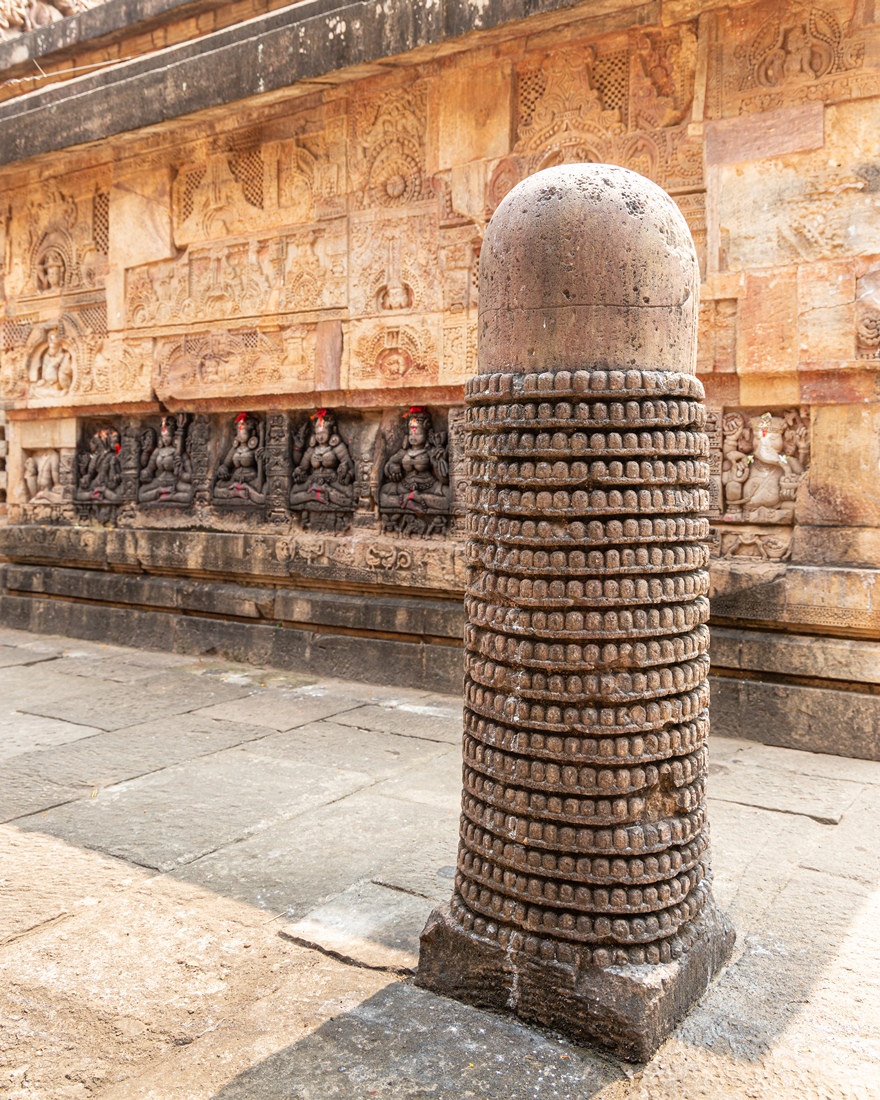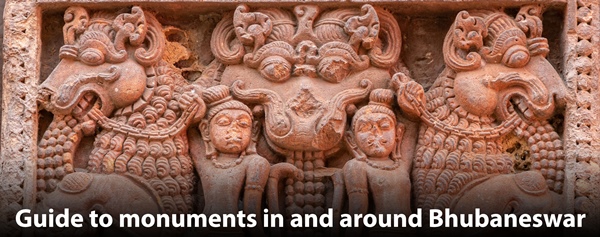Located in the north-west corner of well maintained gardens that also contains the Mukteshwar and Siddheshwar Temples, Parasuramesvara Temple is the earliest of the completely preserved temples in Bhubaneswar. If for some bizarre reason you only have time to see one ancient temple in the old city, this in my opinion is the one to head for. The fact that I took well over 250 photographs of this temple alone is testament to the impact it had on me.
Precisely dating the temple has proven to be problematic. Charles Fergusson suggested a date as early as 500 A.D, but in more recent years the majority of scholars have broadly agreed that the temple was probably constructed around 650 A.D. This is based on the style and presence of the eight planets which appears above the door of the inner sanctum, temples built later portray nine planets.
The mid 7th century date places this temple during the rule of the Shailodbhava dynasty, possibly built by Madhavaraja II, who had Shiva as their family deity as well as respecting Shakta deities. An inscription on the south doorway of mandapa (jagamohana) gives the old name of the temple as Parasesvara. Also known as Parashurameshvara, Parsurameswara and Parsurameswar Temple, the monument was significantly repaired in 1903.
Click on any image to view it in a larger format.
The Parasuramesvara is remarkable for its delicately carved figural sculpture and ornamentation. The square-towered sanctuary adjoins a rectangular mandapa with a sloping roof arranged in two tiers. There is some evidence that the roof is a slightly later modification.
The outer walls of the sanctuary have three projections on each side, with the central projections housing the major icons, most notably Kartikeya (east) and Ganesha (south). These are surrounded by intricate bands of lotus ornament and miniature figures.
A wonderful panel depicting Shiva’s marriage appears immediately above Kartikeya, with Brahma, Surya and other gods (including Ganesha?) in attendance.
The empty side niches are raised on a moulded basement decorated with a variety of images; birds, beasts and animals. Above the niches are pediments with arched motifs filled with images.
It’s a great pity that the majority of the sanctums niches are now empty. With the images carved separately and placed here, it was all too easy for antiquity looters to remove them. Perhaps we’re lucky to still have two of them remaining in-situ all things considered.
Horizontal mouldings divide the gently curving tower. The central projections contain figures of Durga spearing a buffalo (north), Shiva begging Parvati for food (south), a seated Lakulisha (east) and a seated Ravana below a dancing Shiva (west). A large amalaka caps the tower.
Figure of goddesses, guardians and amorous couples adorn the two mandapa (jagamohana) doorways, with Lakshmi on the lintel of the west door, which is the principal (west) entrance.
The mandapa has a total of four windows, two on the west, and one each on south and north. The windows on south and north do not give symmetry, which perhaps suggests they are not original and were inserted at a later date.
The west pierced stone window is wonderfully decorated with musicians and dancers.
Above the mandapa walls are friezes of elephants, people worshiping a linga, and various other scenes. They are slightly obscured by the end of the roof line, but be sure get up close so you can take a good look at them.
At the southern end of the western mandapa wall is a Saptamatrika group (seven mother-goddesses) with Virabhadra and Ganesha flanking either side.
The entire group starts with Virabhadra, seated with his bull carved on the pedestal. Next is the three-headed Brahmani with a swan at the pedestal.
Next is Mahesvari, holding a trident, Kaumari holding Shakti, Vaishnavi and Indrani, This is followed by Varahi (holding a fish) and Chamunda with their respective mounts, a man and an owl, carved on their pedestals. In the last niche is Ganesha, who is holding a raddish, axe, a string of beads and a bowl of sweets.
Towards the north-west corner of the temple compound is a sahasra linga, with its surface carved with hundreds if not thousands of miniature lingas.
The interior of the temple is almost completely plain, with massive slightly more modern looking columns helping support the roof.
Above the sanctuary door is that panel depicting the eight (not nine) planetary deities, potentially the key to helping date this temple more accurately. Within the sanctuary is a Shiva linga on a circular pedestal.
I apologise for large number of photos in this post, it was too difficult to narrow down the pool of images any further :-). For me this was the most memorable temple I visited in Bhubaneswar. Not just because of the level of intricate carvings that almost cover the entire exterior, but also because it seemed relatively unvisited by crowds, most likely due to the draw of the nearby Mukteshwar Temple.
Although the Parasuramesvara Temple is a small structure and devoid of impressive grandeur, its importance lies in the fact that it is probably the earliest in the city, in a wonderful state of preservation, can be accurately dated, and is copiously carved from top to bottom. The one temple not to miss when you visit Bhubaneswar.
Please ‘Like’ or add a comment if you enjoyed this blog post. If you’d like to be notified of any new content, just sign up by clicking the ‘Follow’ button. If you have enjoyed this or any other of my posts, please consider buying me a coffee. There’s a facility to do so on the righthand side of this website for desktop users, and just above the comment section for mobile users. Thank you !
If you’re interested in using any of my photography or articles please get in touch. I’m also available for any freelance work worldwide, my duffel bag is always packed ready to go…
KevinStandage1@gmail.com
kevinstandagephotography.wordpress.com
Categories: Bhubaneswar, India, Odisha, Parasuramesvara Temple

































































Great article. Good detail and terrific photographs.
Will plan visit and read up more on its history. With heartfelt thanks.
LikeLiked by 1 person
Lakuleesa is an interesting piece of information. In a inscription in Kerala I have read this name. And from Gupta period onwards there are evidences of worship of Lavuleesa as a Giru.
LikeLiked by 1 person
250 spans it must have a gratifying experience to witness this marvel. If we can even feel a fraction of the love and dedication with which this temple would have been built we are inch nearer to tridev and tridevi
LikeLiked by 1 person
Truly magnificent. I confess. I’ve learnt more about temples and carvings from you than anywhere else.
LikeLiked by 1 person
Great article Sir, very informative and good photos
LikeLiked by 1 person
Thank you Abhishek 🙏
LikeLiked by 1 person